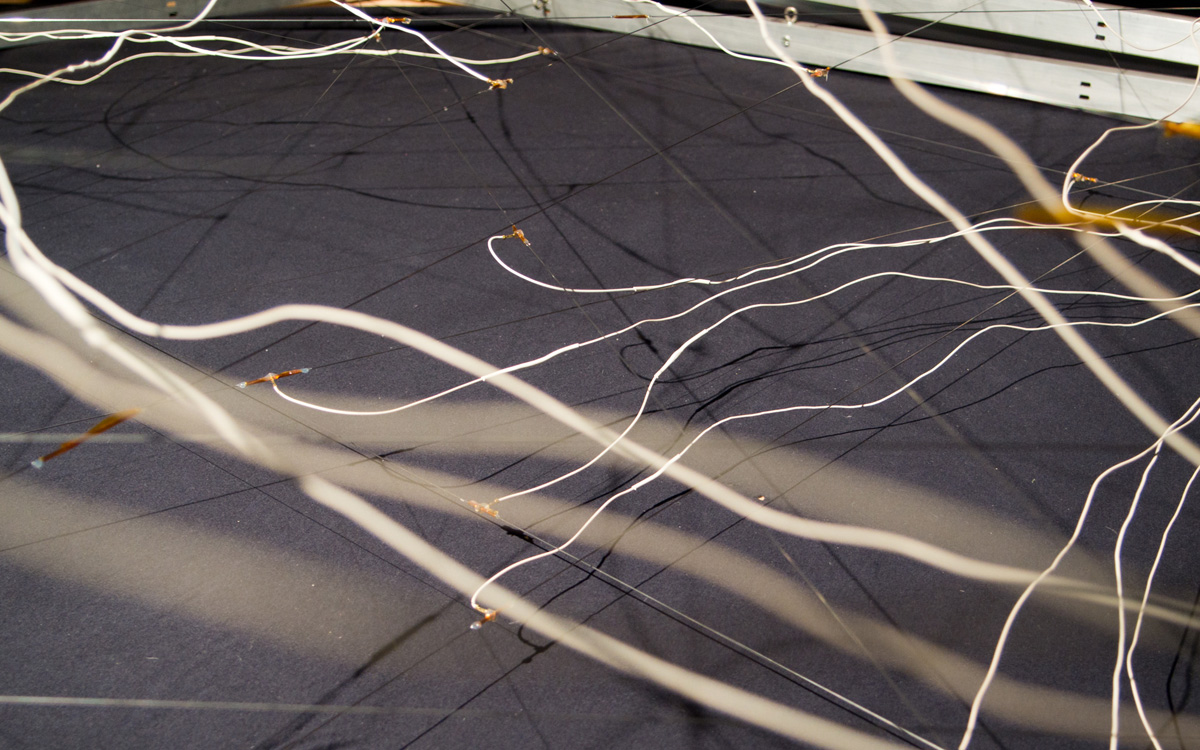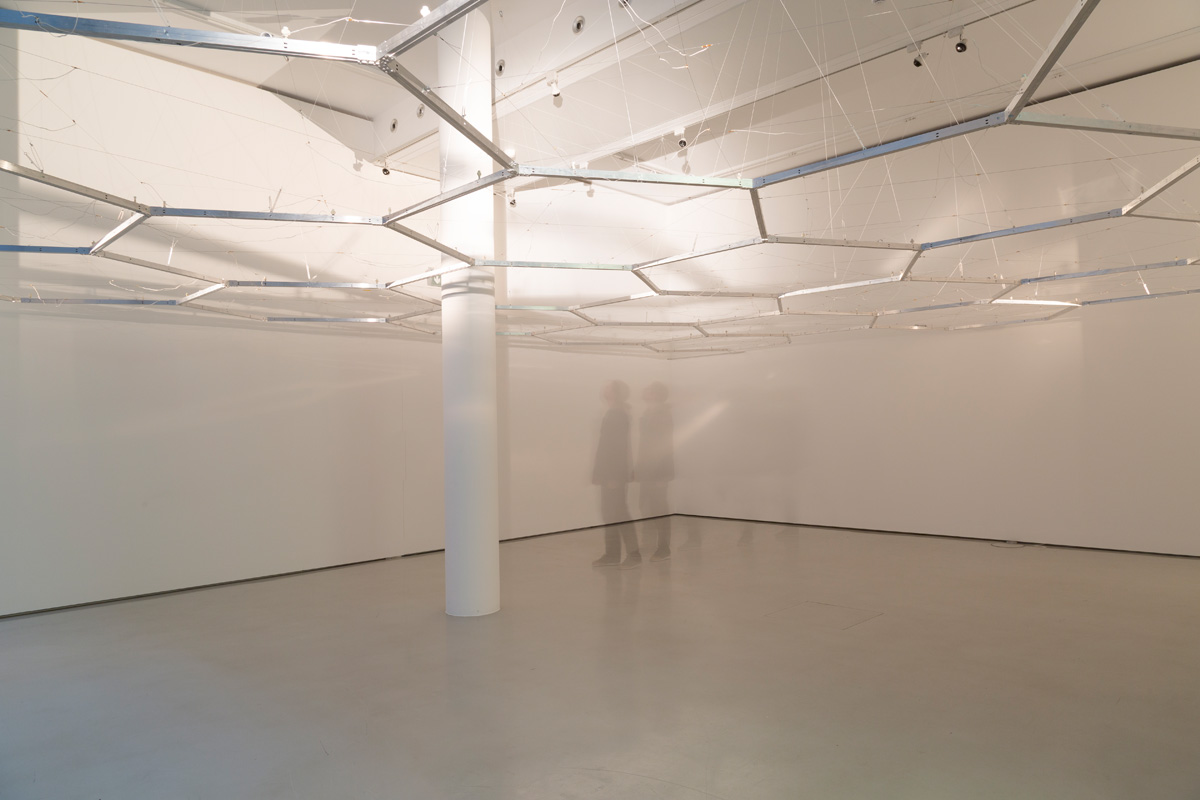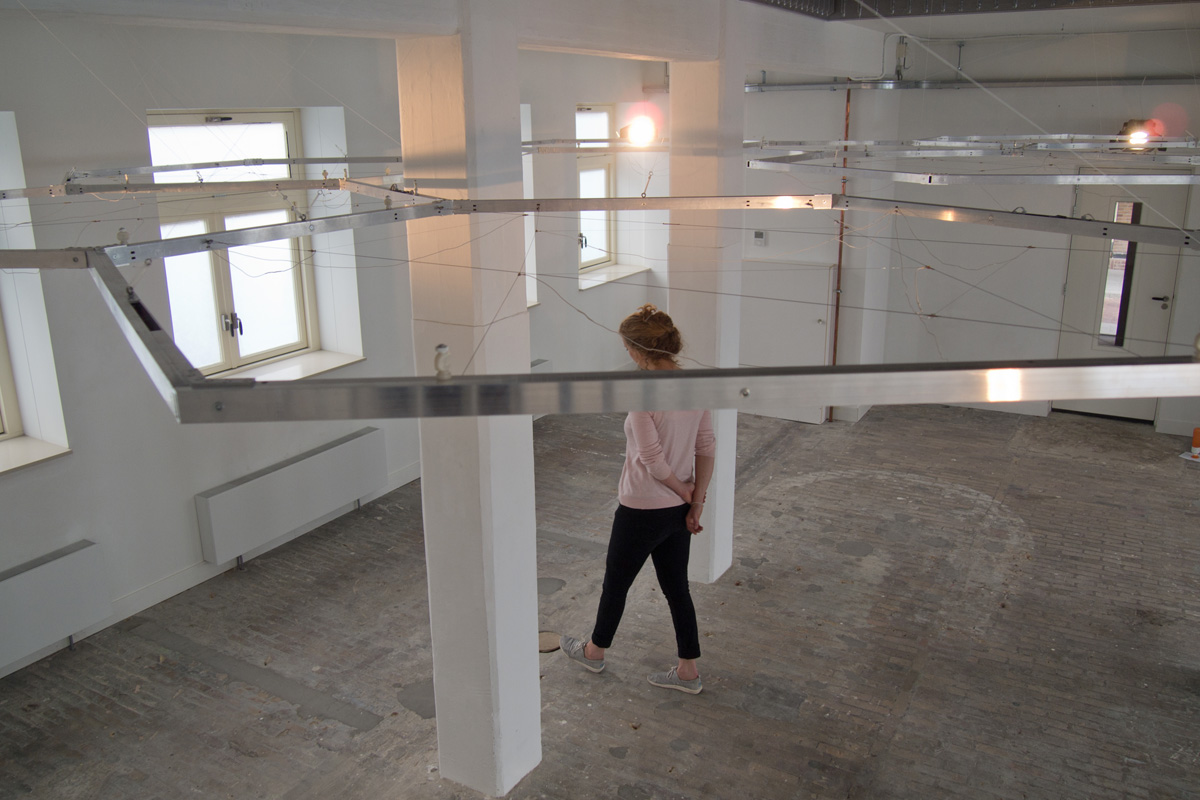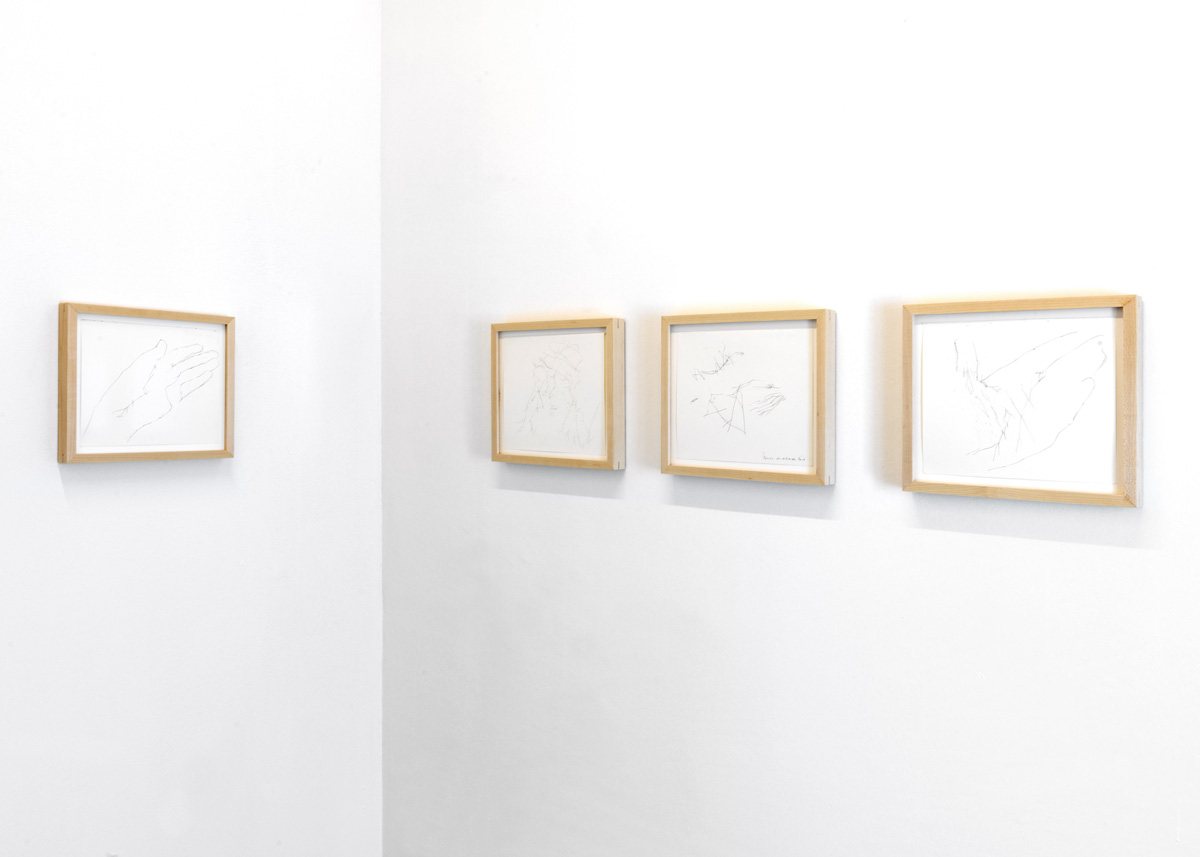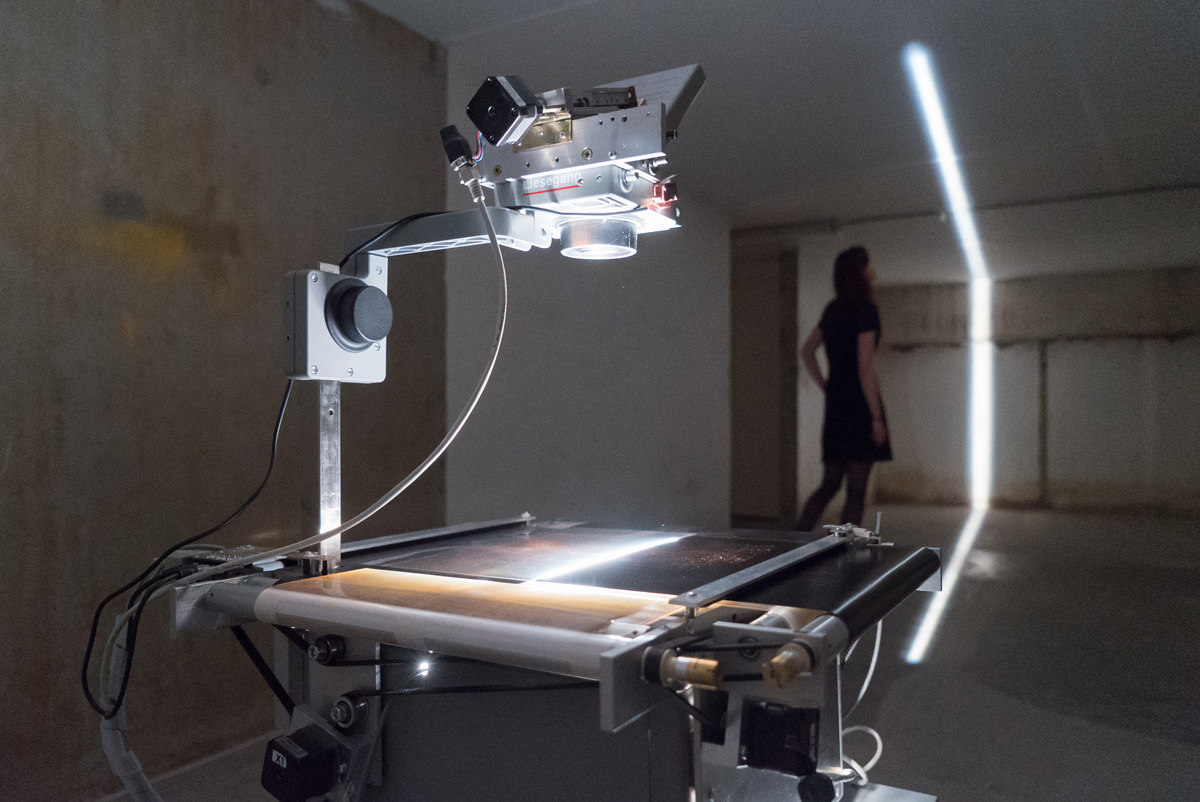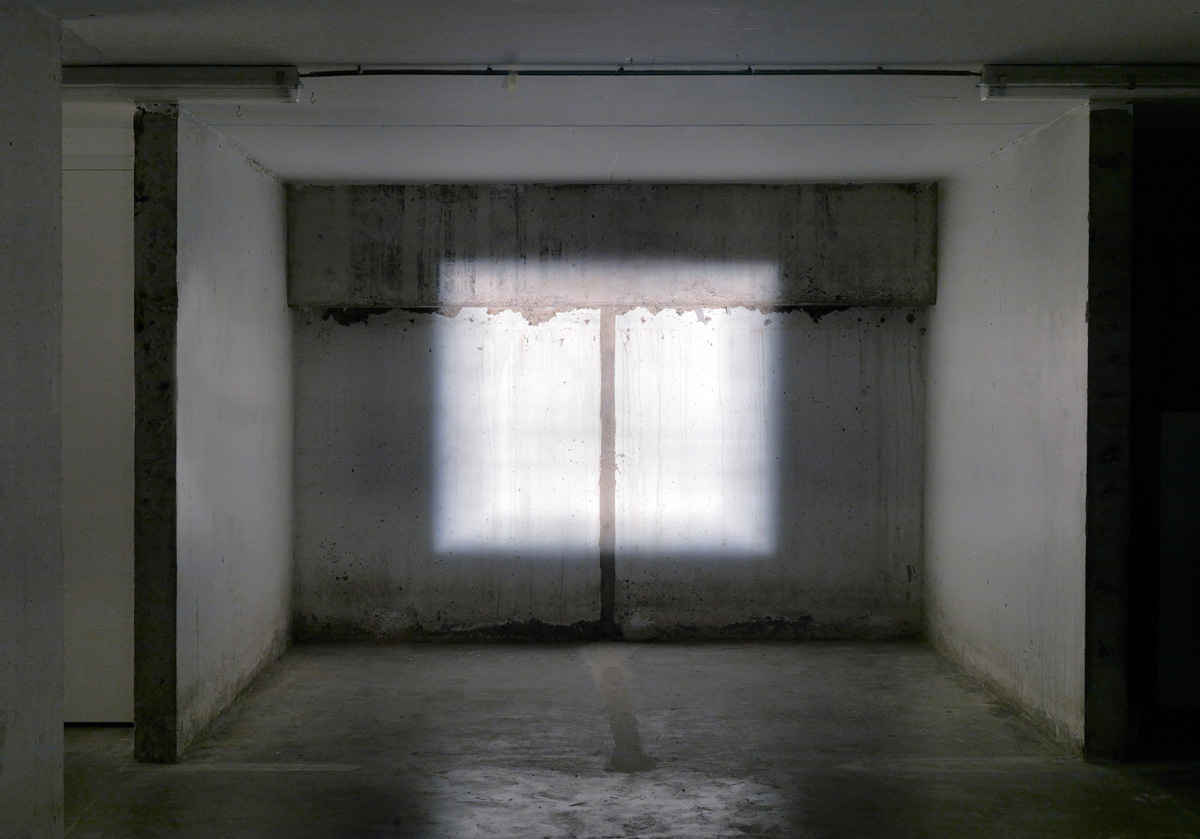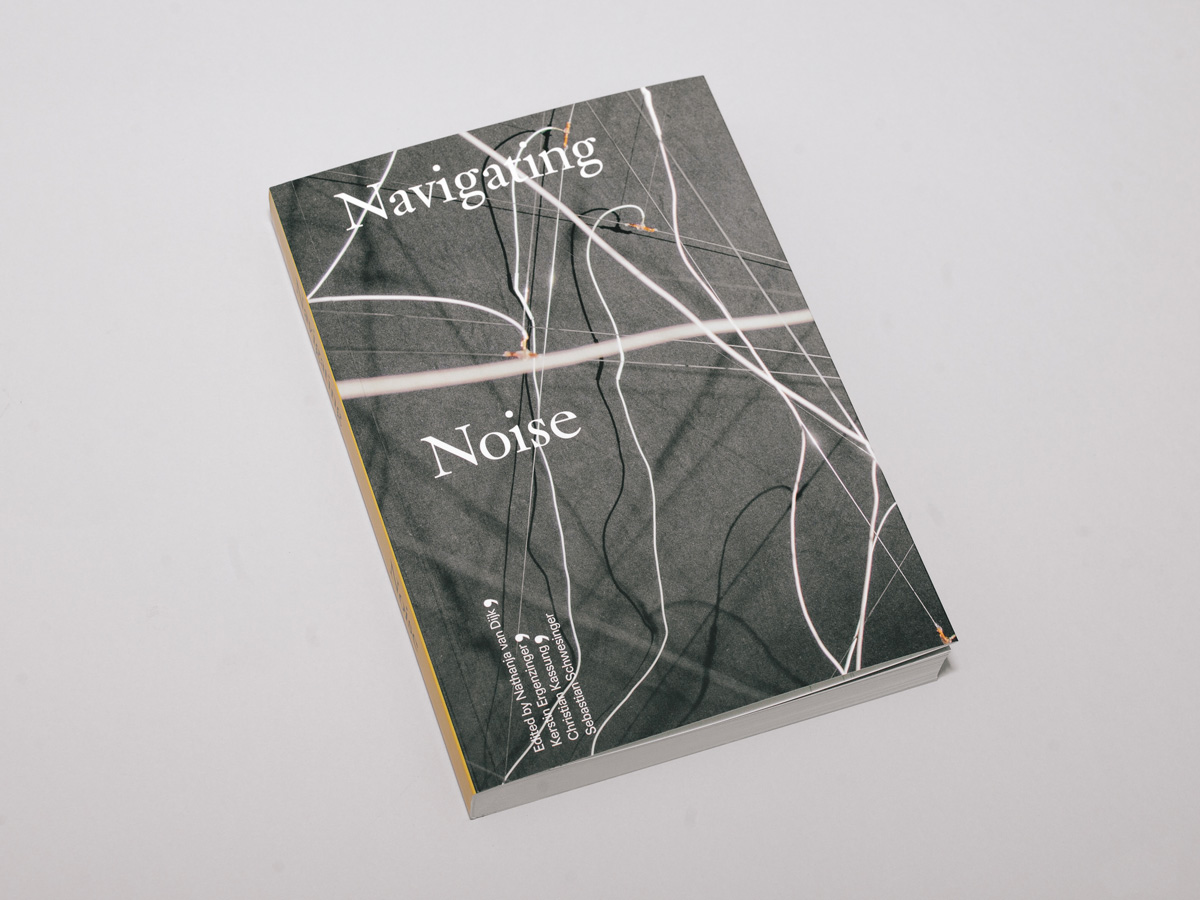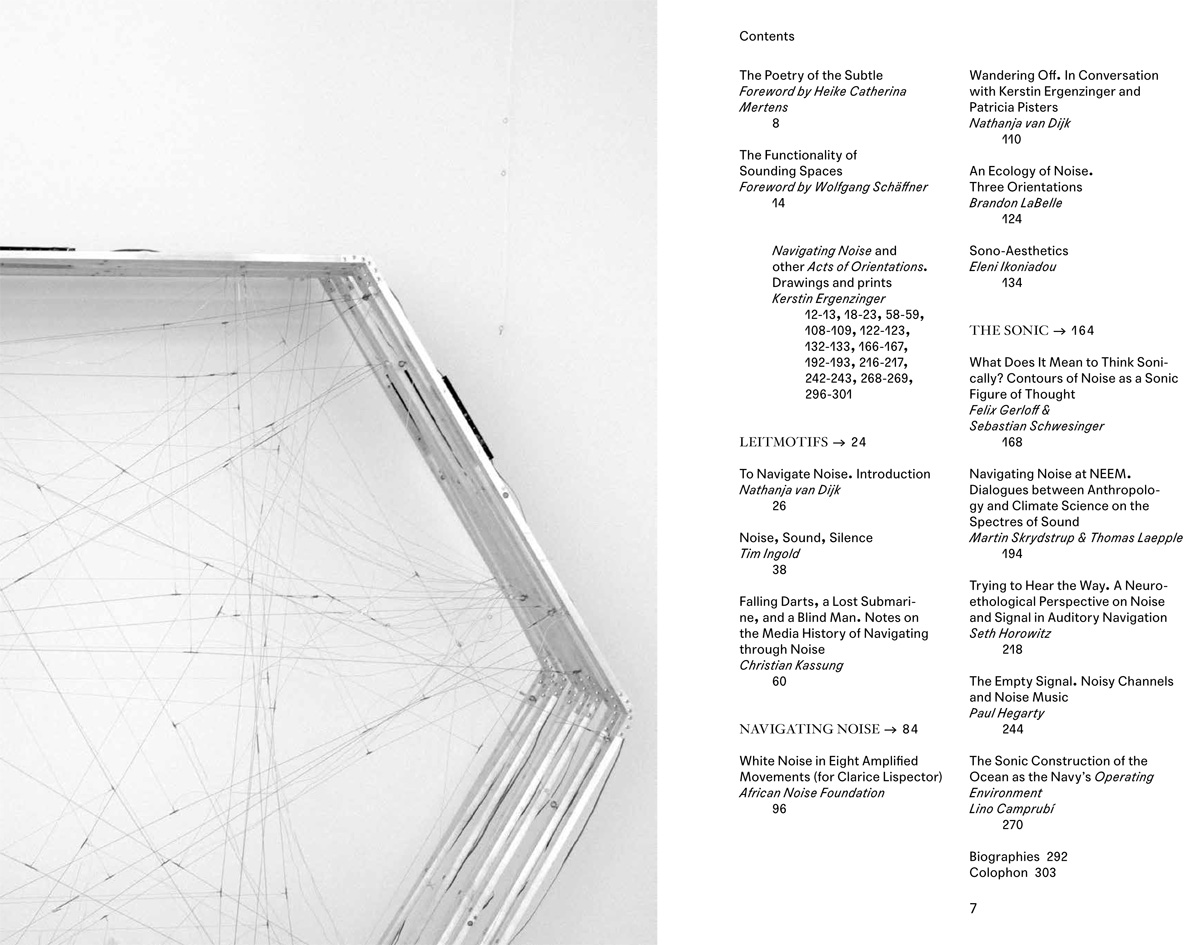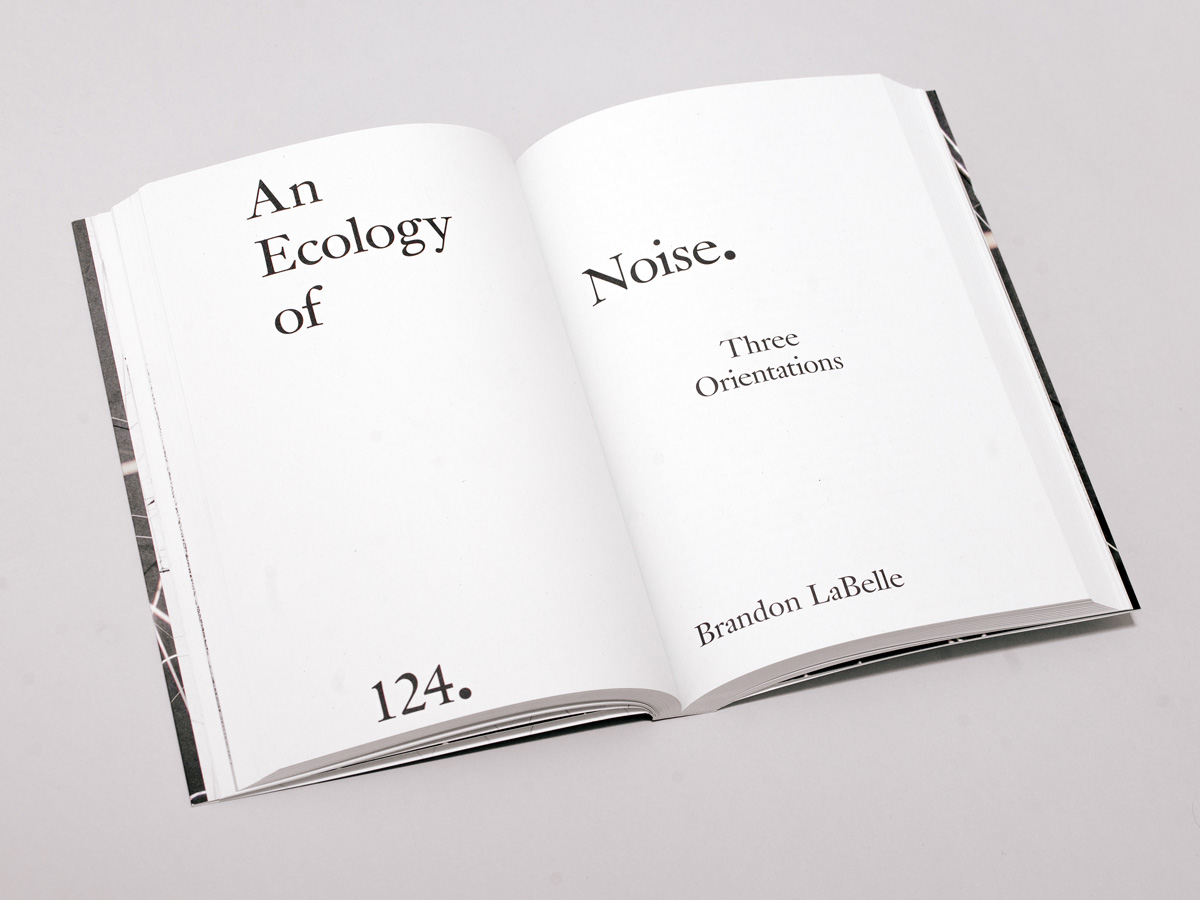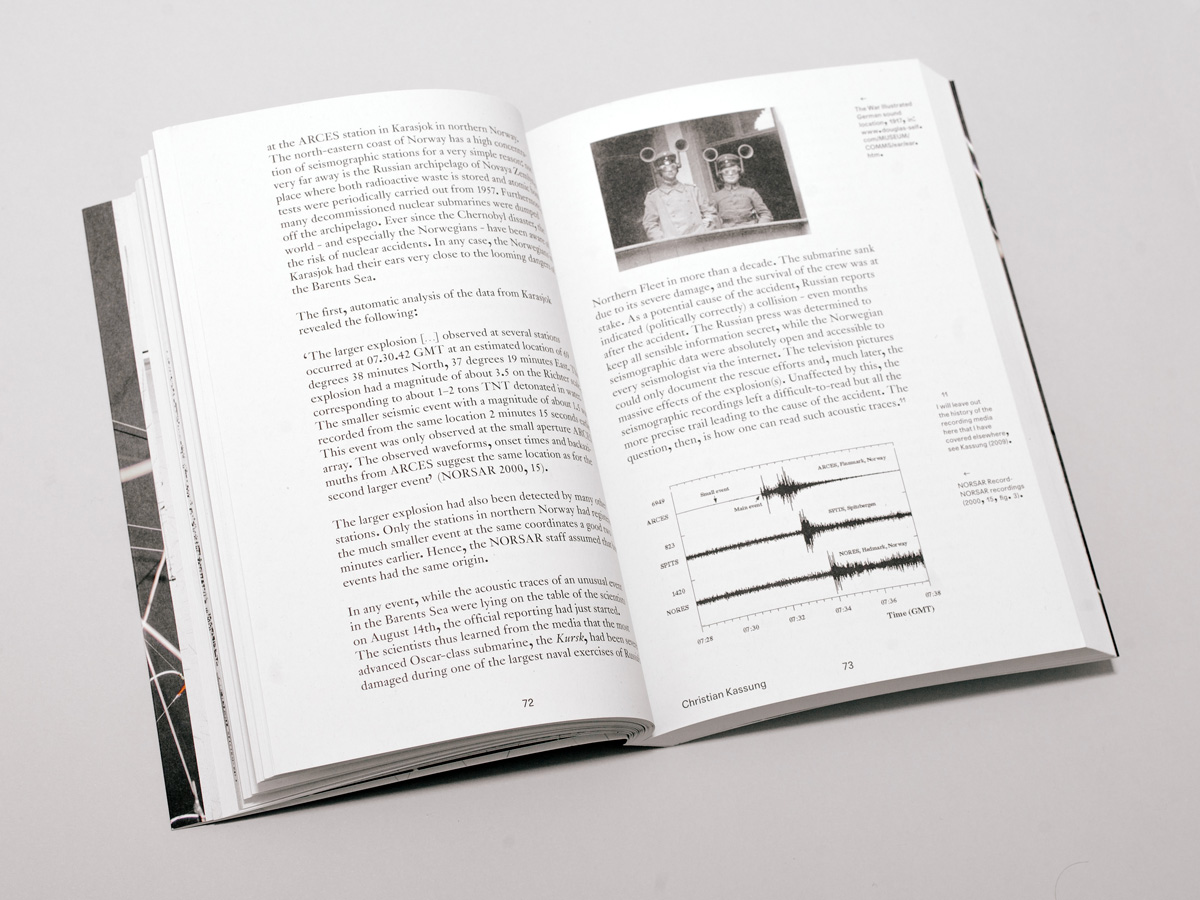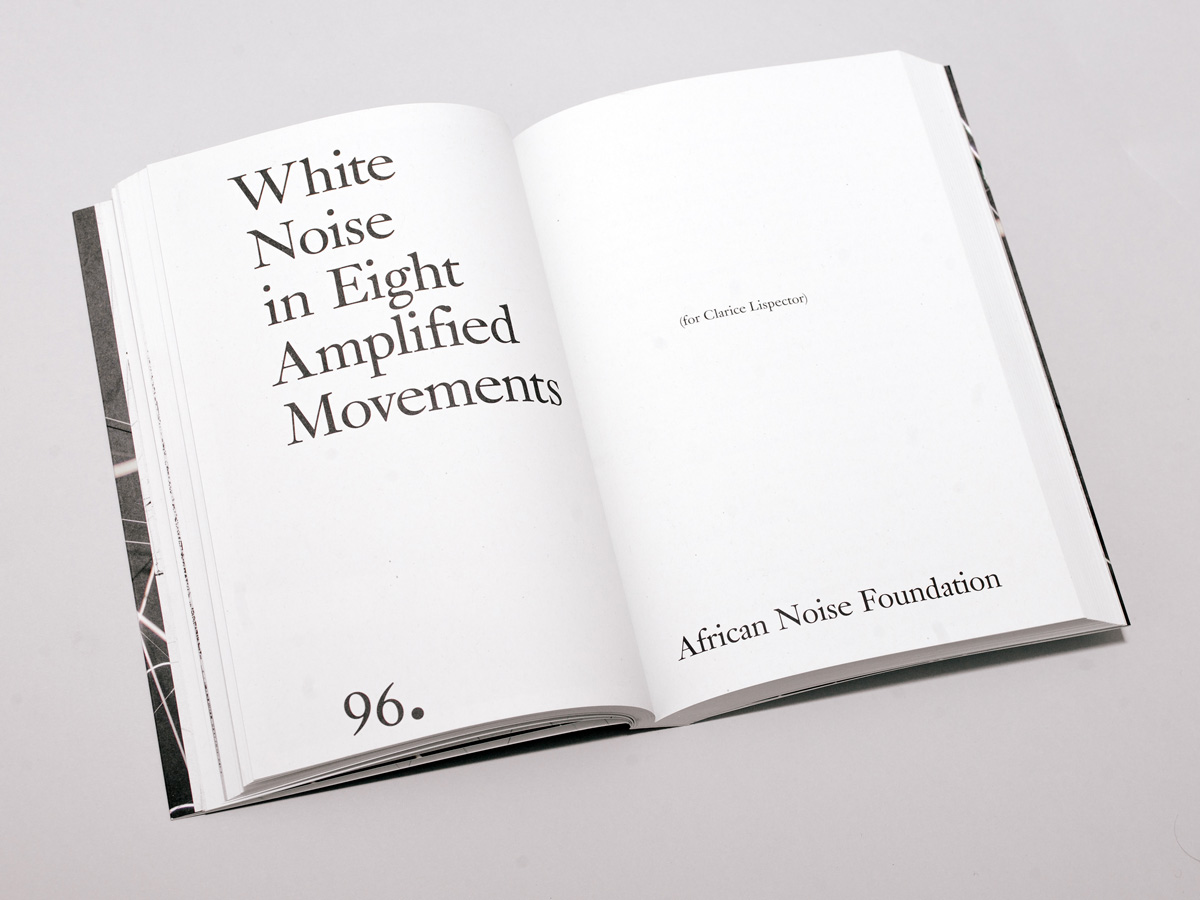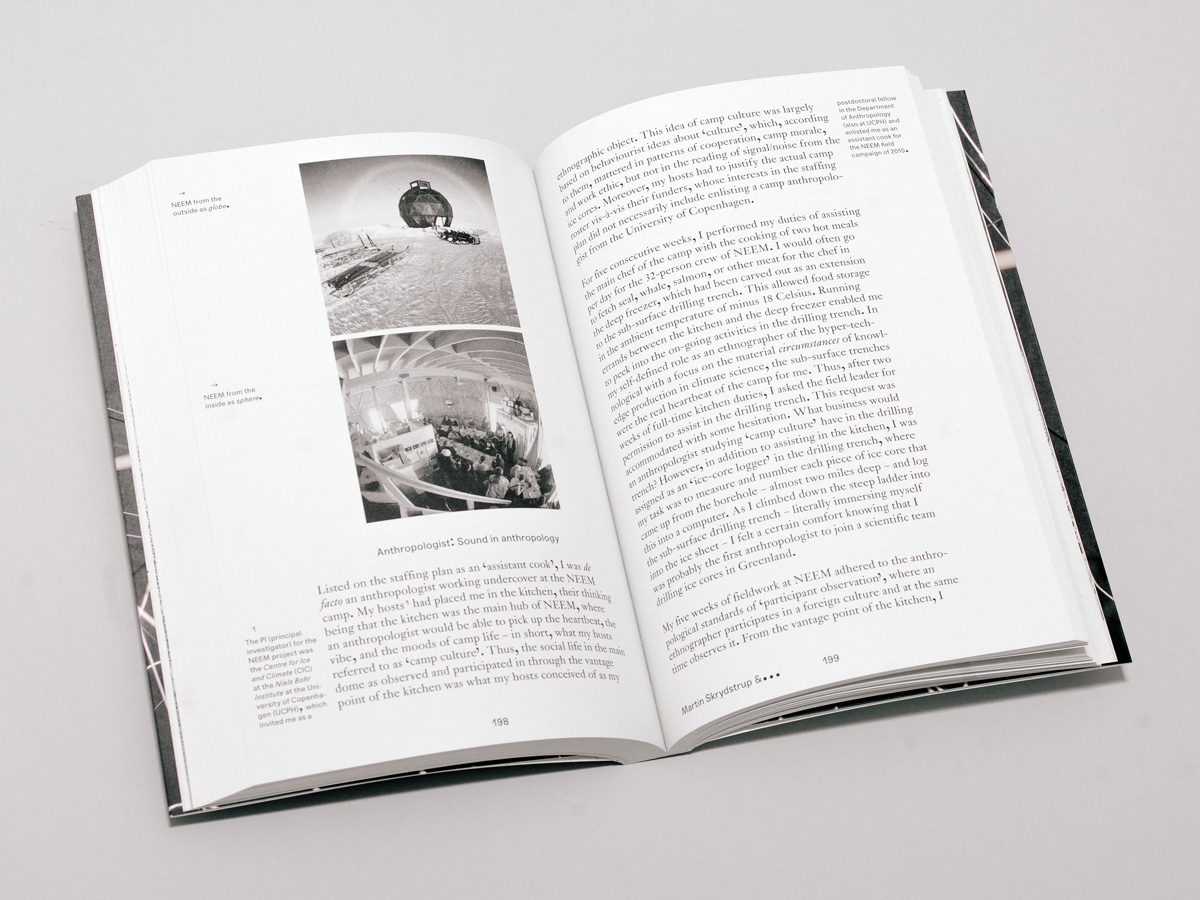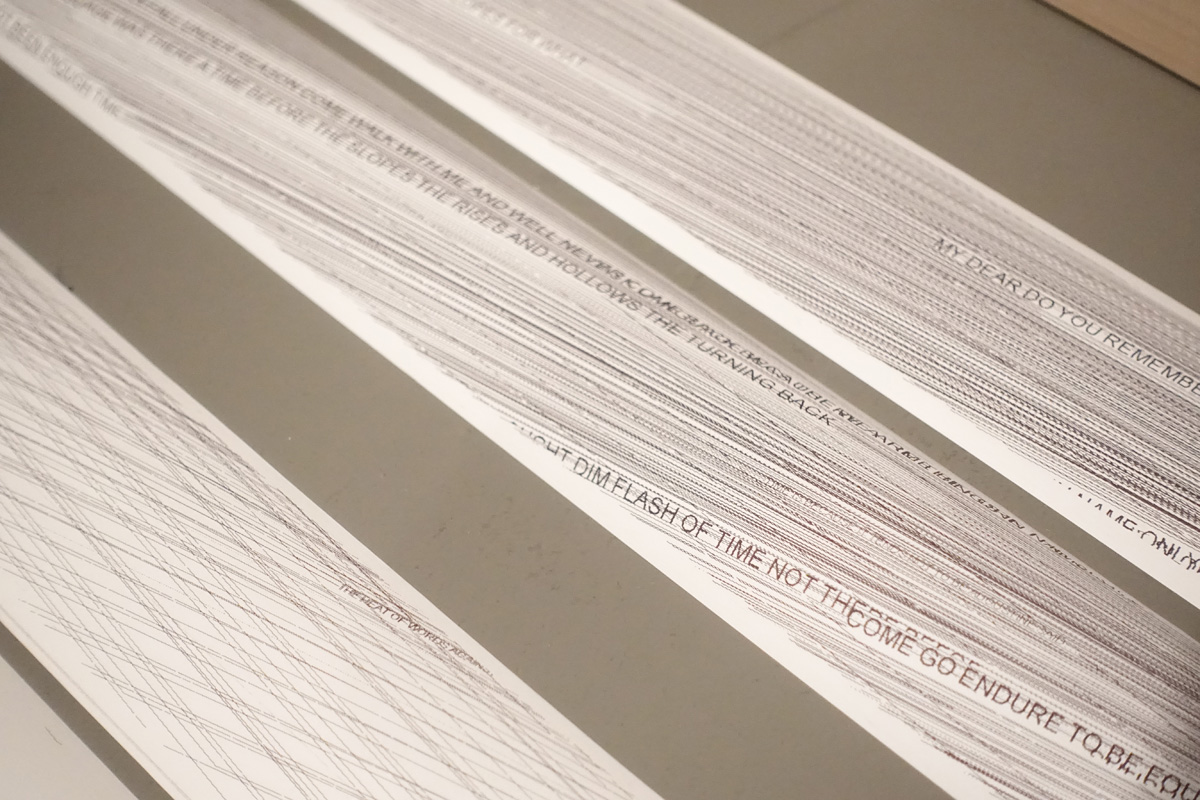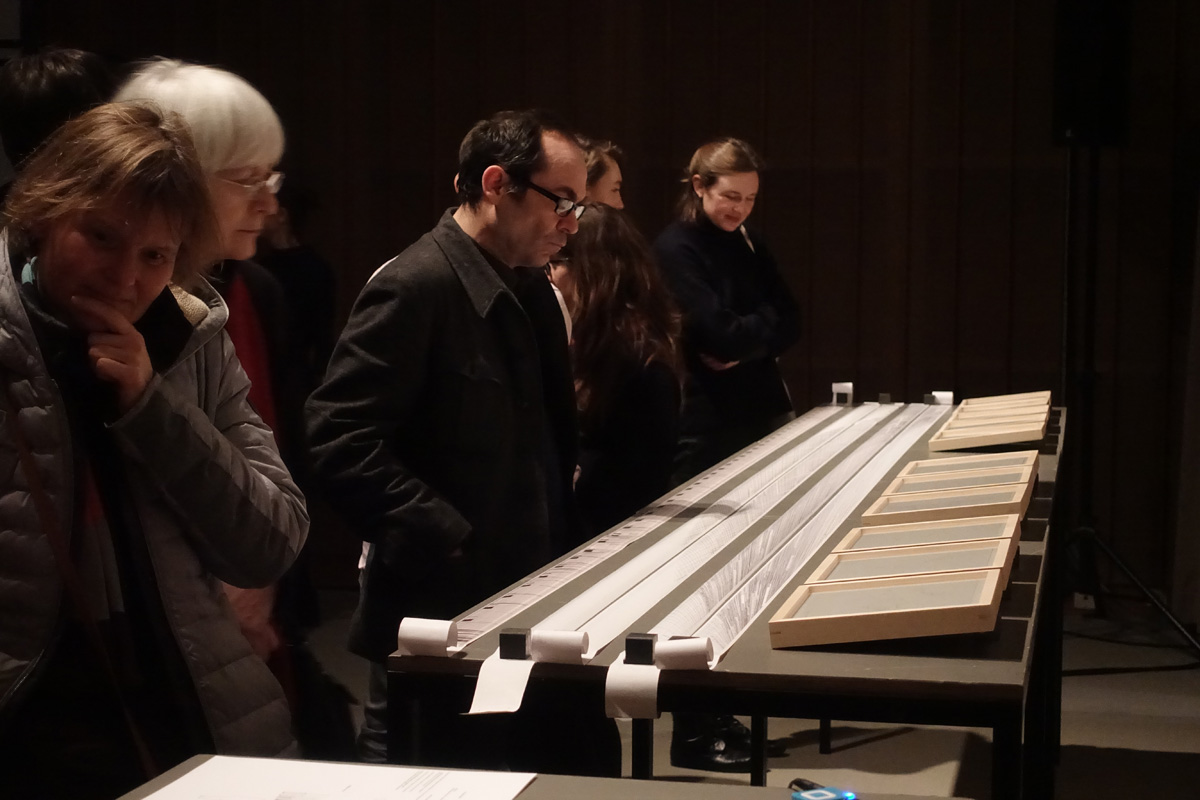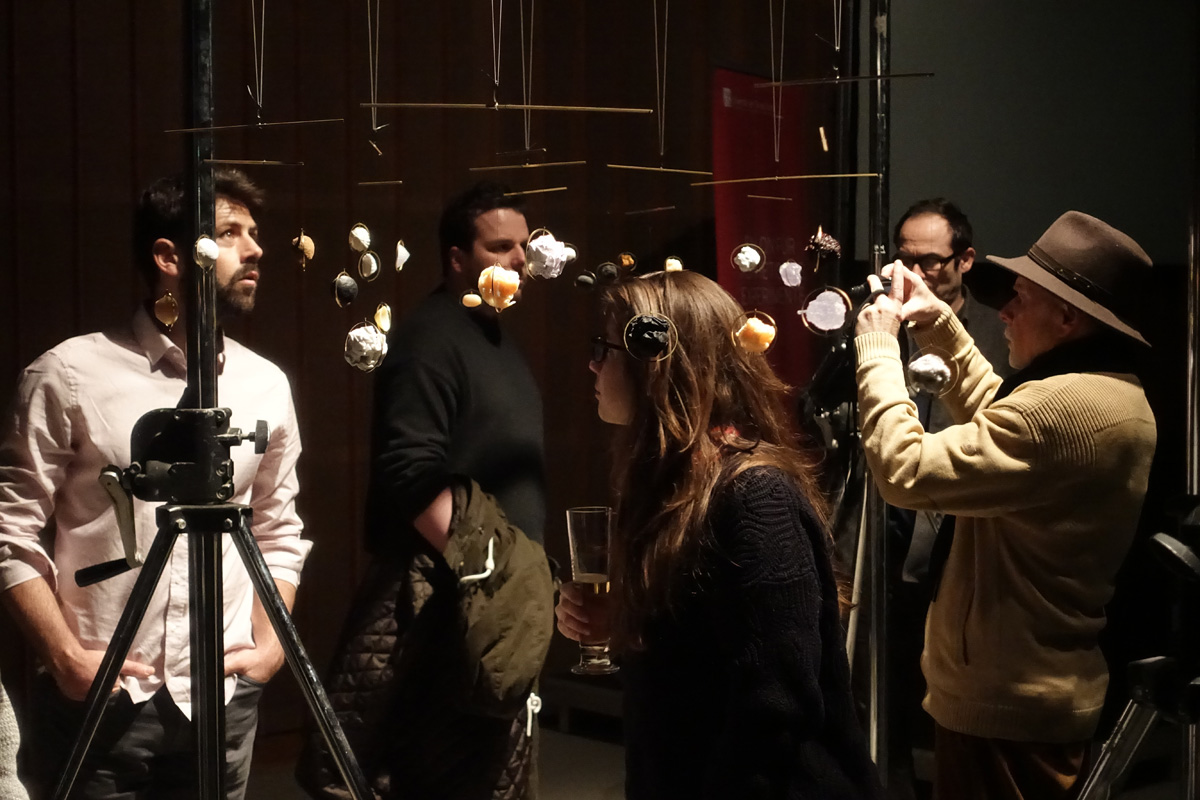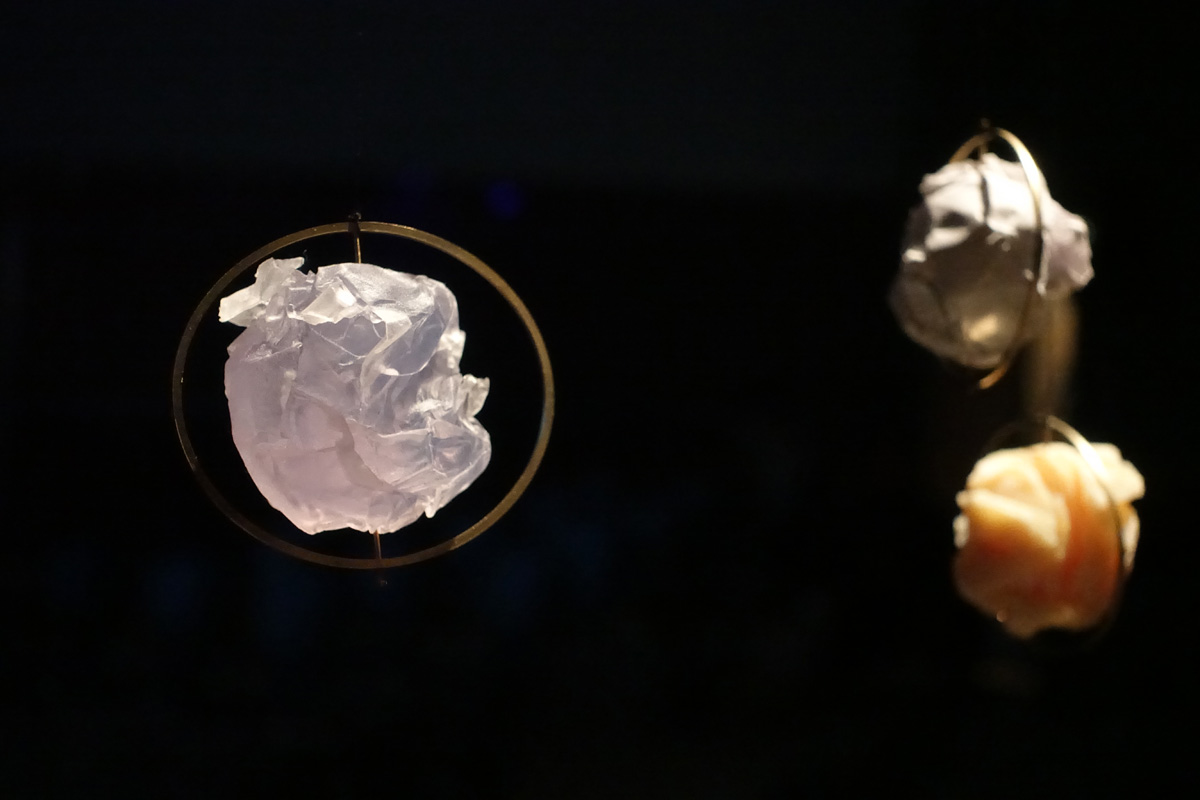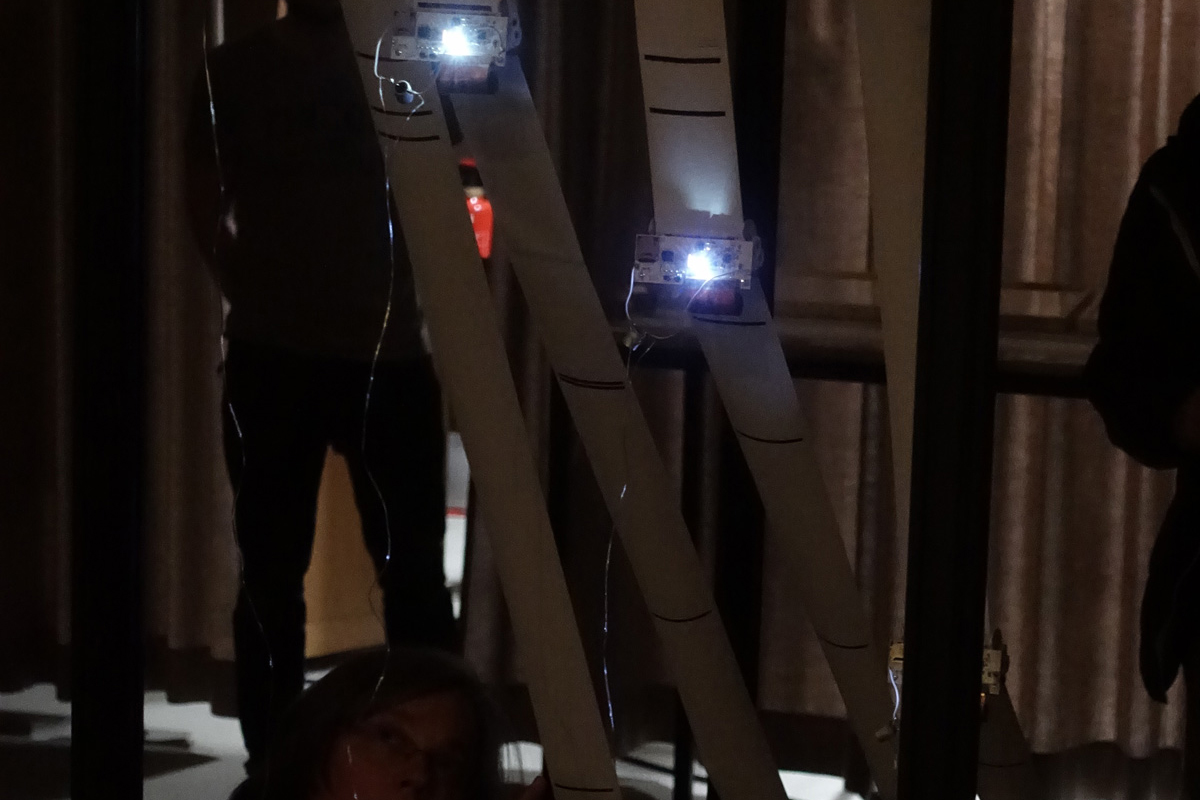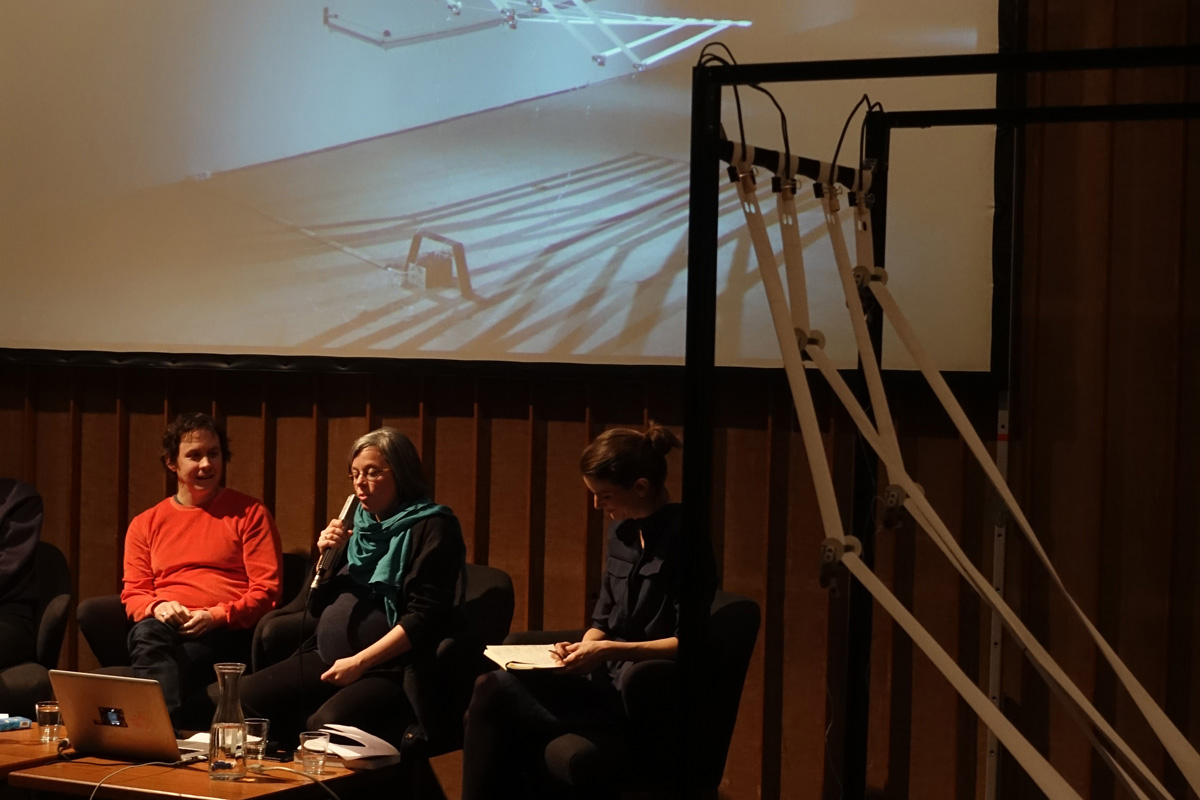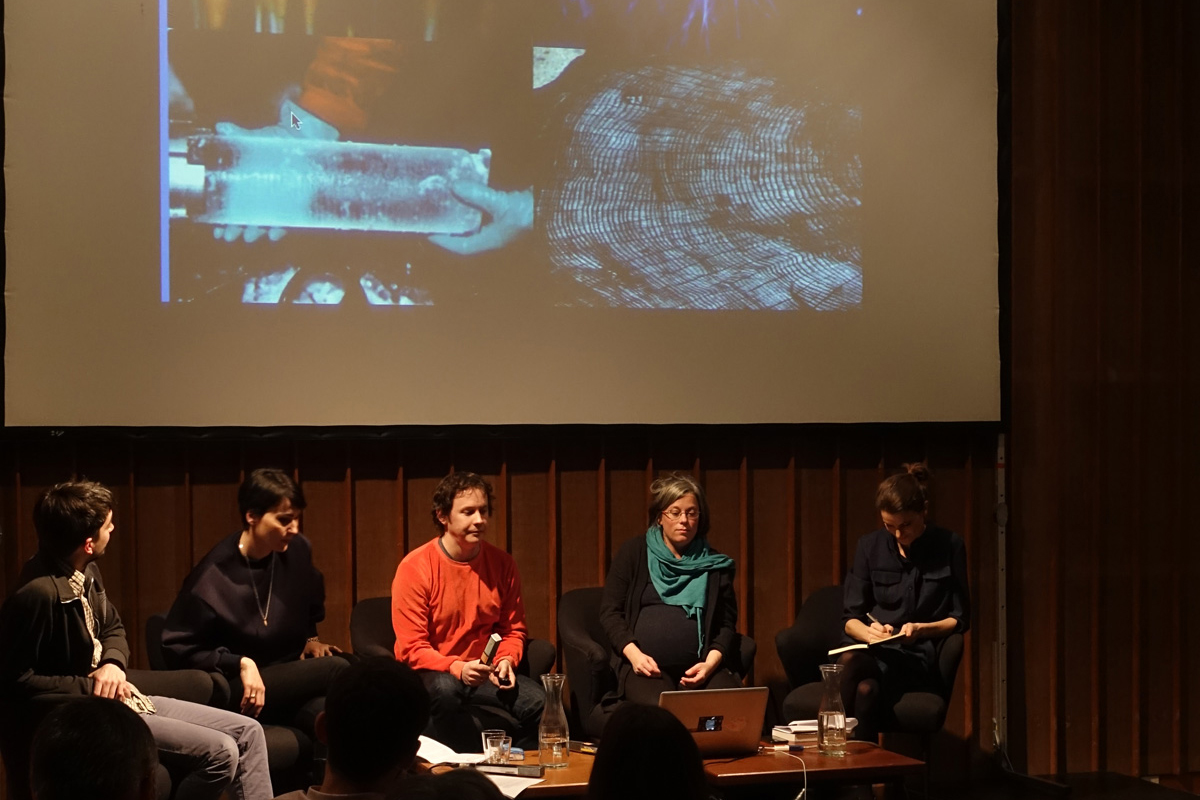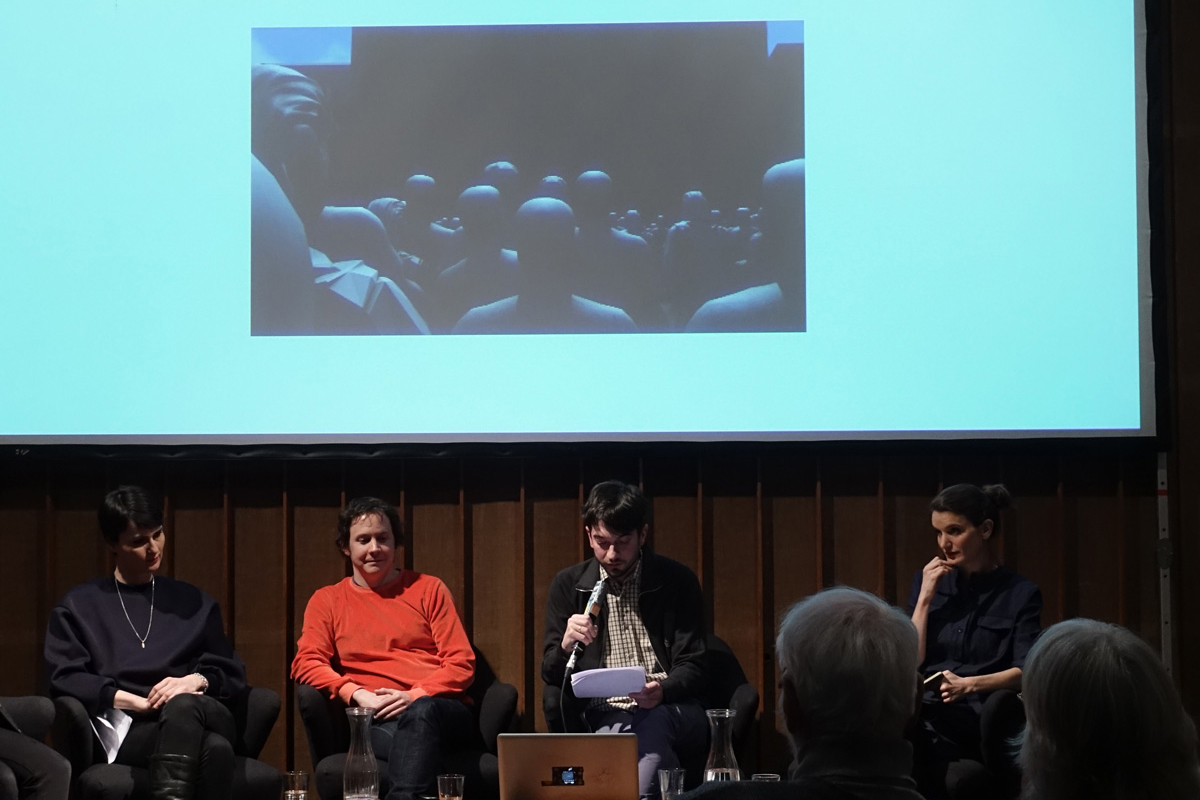Acts of Orientation
Acts of Orientation is the programmatic title of independent cross-disciplinary research group and ongoing project founded by founded by an artist, myself, physicist Thomas Laepple and curator Nathanja van Dijk. Departure point of the joint research was my wish to develop a new interactive sound architecture: Navigating Noise right from the beginning within a critical dialog from a spatial-physical as well as natural science and humanities perspective both about forms and strategies of orientation in our technologized world and about conscious and unconscious mechanisms of perception. 2014, in preparation of our first exhibition at the Schering Stiftung in 2015, including a symposium with a series of seminars and a public lecture, we started to collaborate with Sebastian Schwesinger and Christian Kassung from the research group Analog Storage Media at the Interdisciplinary Lab of Image Knowledge Gestaltung Cluster of Excellence at Humboldt University Berlin.
On the act of orientation
Orientation is an act of tuning and co-ordinating. Our own perceptual apparatus and its learned mode of administration need to be co-ordinated with a magnitude of technologies and techniques that form the reference framework for our activity. Where bottom-up perception and top-down instruction blend a zone of highly intricate interaction is created. This field constitutes what Erich Hörl has coined »our highly technicized sense-culture« (in German »Sinnkultur«, 2013, p. 128). Consider yourself in a simple navigational situation like driving a car. Your auditory, visual, and other sensory perception and feedback is constantly confronted with geographical, transport, engineering and other reference or input data. Synchronisation does not happen by itself. Orientation, thus, needs techniques and strategies to bridge some of the fundamental categories at work here, some of them pivotal enough to characterise our historically specific condition: analog | digital, implicit | explicit, subjective | objective, etc. This description of orientation can serve as a common denominator for every situation in which we try to make sense of the world, may it be the everyday or science, in the realms of the concrete or the abstract.
With the aid of Navigating Noise this project intervenes both theoretically and practically in such trading zones of sense-making. It investigates not only the technology but also its inherent strategies as well as the material affordances utilised in orientation, i.e. its diagrammatics. What perceptual patterns are applied intentionally and unintentionally when such situations get blurry or noisy? What relations evolve when reference structures and data input do not match? Investigating such navigational systems or situations from the perspective of noise, i.e. what is excluded, dangerous, or unprocessable, one can unveil a system’s foundations and internal logics. In this way, a fresh perspective for critical evaluation is offered. Instead of macro-politics it is the micro-political which forms every act of orientation.
Past Acts of Orientation
Up to now we realized two exhibitions, the first 2015 at the Schering Stiftung Berlin, which included a symposium with cross-disciplinary seminars, a sound walk and a public lecture. The second 2016 at A Tale of a Tub in Rotterdam including an evening on sonic abstraction. Over the course of two years we worked on a follow up, cross-disciplinary publication: “Navigating Noise” (ed. Nathanja van Dijk, Kerstin Ergenzinger, Sebastian Schwesinger and Christian Kassung, Kunstwissenschaftliche Bibliothek Bd. 54, Walther König, 2017, http://a-tub.org/online/navigating-noise-publication/) and developed an experimental public evening in the series Salons der Ästhetischen Experimente at the Haus der Kulturen der Welt, Berlin.
Throughout the exhibitions and the follow up publication, the installation Navigating Noise was the joint space for experience that provided a shared sensorial dispositive from which the cross-disciplinary dialogue between the participants and the public departed.
Navigating Noise, the book, with contributions by African Noise Foundation, Lino Camprubí, Felix Gerloff, Paul Hegarty, Seth Horowitz, Tim Ingold, Eleni Ikoniadou, Brandon LaBelle, Thomas Laepple, Heike Catherina Mertens, Patricia Pisters, Wolfgang Schäffner, Martin Skrydstrup:
Navigating Noise” means getting off the beaten track in order to find, or rather, to create something new. This publication is the result of such unconventional navigations, which follow the track of noise on its path across art, science, and the humanities. The point of departure is the artwork Navigating Noise by artist Kerstin Ergenzinger and physicist Thomas Laepple. This ephemeral, somewhat out-worldly sound installation provides the framework for a collection of academic and artistic contributions that address the need for alternative means of orientation to deal with noise and to understand and (re)establish our unstable position within a highly technologized, mediated, and globalized reality. These navigations cover a broad terrain of research: from the starry skies to the deep oceans, from the ice cores of Greenland to sonic navigation in the animal kingdom, from spatial acoustics in World War I to noise music. Through a multidisciplinary approach, Navigating Noise paves the way for unexpected connections between research domains located
Acts of Orientation, the Salon für Ästhetische Experimente at Haus der Kulturen der Welt Berlin
Based on investigations on how to orientate oneself at the borderline of noise and and on the just released interdisciplinary publication “Navigating Noise”, the Salon “Acts of Orientation” questions as well the notion of rhythm as a middle force between regularity and chaos as the role of gaps and lines in orientation processes such as sensing, recording, reconstructing, translating and interpreting.
Starting with an experimental concert: “Listening to Spacetime Poetry”, performed by custom-made thermal printers, the evening tries to blend practical and theoretical thinking by offering a choreographed sequence of presented works in process that enter into dialogue with the different perspectives of the contributing guests:
Nathanja van Dijk (curator with background in art history and philosophy),
Eleni Ikoniadou (writer, researcher, teacher and practitioner specialising in media theory, sonic research and digital art and culture),
Thom Laepple (physicist working in climate research, specialist in the quantitative synthesis and explanation of paleoclimate data such as ice cores),
Sebastian Schwesinger (research associate in the Analog Storage Media project, specialising in models of sonic thinking and reasoning and the connection of sonic materiality with physical and virtual infrastructre design)
and with a contribution by the African Noise Foundation featuring Nicola Dean.
Collaboration Research / since 2013 (ongoing)
interdisciplinary research project by Kerstin Ergenzinger, Nathanja van Dijk and Thom Laepple
Nathanja van Dijk
Thom Laepple
Research group »Analog Storage Media« of the Cluster of Excellence Image Knowledge Gestaltung at Humboldt-Universität zu Berlin:
Christian Kassung
Sebastian Schwesinger
LAP Leuphana Arts Program
Schering Stiftung
»Analog Storage Media« of the Cluster of Excellence Image Knowledge Gestaltung at Humboldt-Universität zu Berlin
A Tale of a Tub, Mondriaan Fond, Gemeente Rotterdam, Pauwhof Fonds, Goethe-Institut Rotterdam
As part of the research project “Rhythmic Textures”, funded by Einstein Foundation Berlin
Realized with the Graduate School at the Berlin University of Arts.
